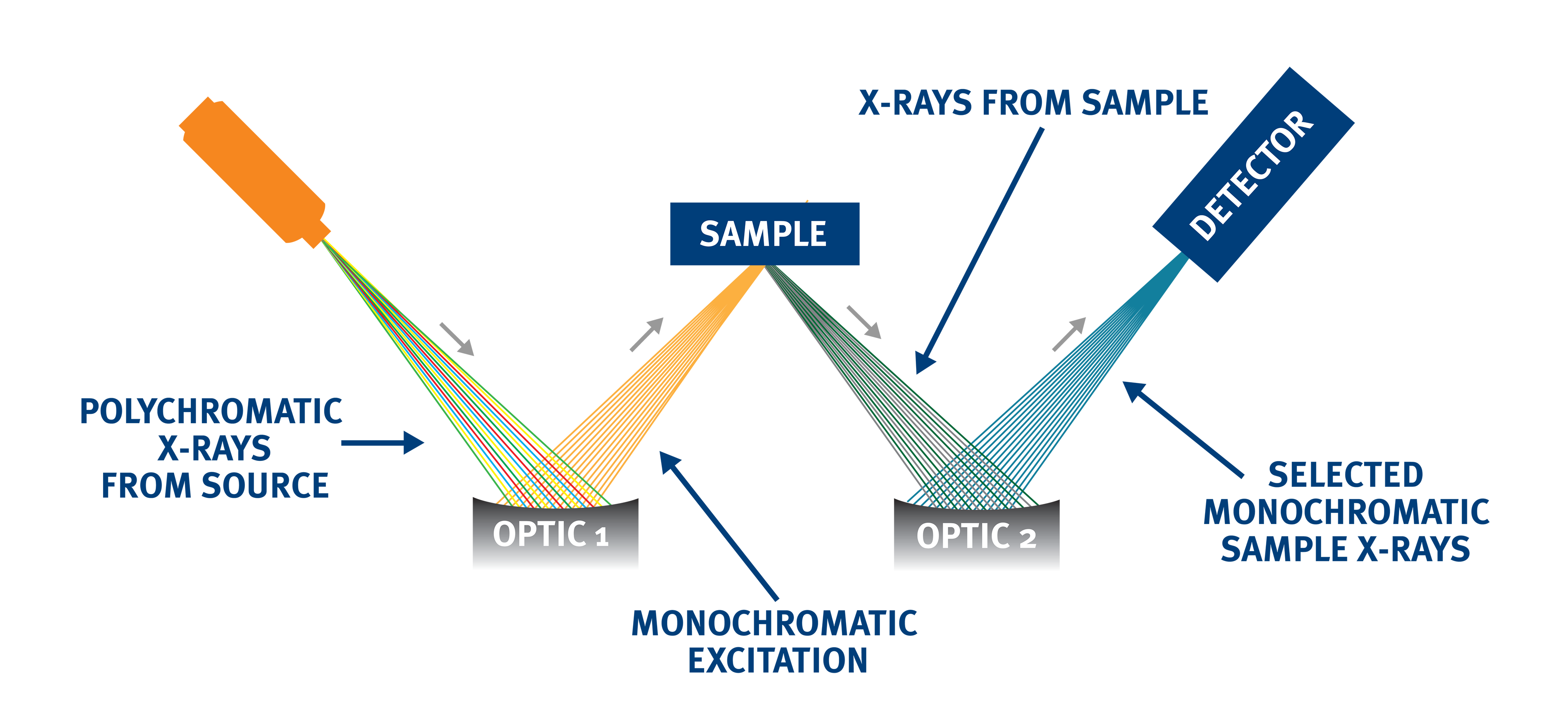- Analyzers
- Optics & Sources
- Technologies
- Support
- About
Monochromatic Wavelength Dispersive X-Ray Fluorescence (MWD XRF)
Doubly curved crystals can be used to enhance conventional wavelength dispersive XRF instrumentation. These diffraction-based optics enable highly intense monochromatic X-ray beams using low-power, air-cooled X-ray tubes. These three dimensionally shaped optics selectively reflect a very narrow band of X-ray wavelengths for sample excitation, according to Bragg diffraction laws.
A monochromatic wavelength dispersive X-ray fluorescence (MWD XRF) analyzer uses two doubly curved crystal optics. Typical instrumentation includes a low-power X-ray tube, a point-to-point focusing optic for excitation, a sample cell, a second focusing optic for fluorescence collection, and an X-ray detector. The first focusing optic captures a narrow bandwidth of X-rays from the source and focuses this intense monochromatic beam to a small spot on the sample. The monochromatic primary beam excites the sample and secondary characteristic fluorescence X-rays are emitted. The second DCC collection optic collects only select characteristic X-ray wavelengths of interest within a narrow bandwidth.
This configuration offers several advantages over conventional WDXRF systems. The signal-to-background is improved by using the monochromatic excitation of the X-ray source characteristic line. Secondly, the focusing ability of the collection optic allows using a small-area X-ray counter detector, which results in low detector noise and enhanced reliability. Monochromatic excitation also provides simplified quantitation and matrix effect correction. This technique enables robust, low maintenance, online analyzers with dramatically lower detection limits and faster response times.

Monochromatic WDXRF using doubly curved crystal optics has the advantage of very high sensitivity for a specific sample element of interest. This technique has been successfully used for measurement of low levels of sulfur in petroleum products.

